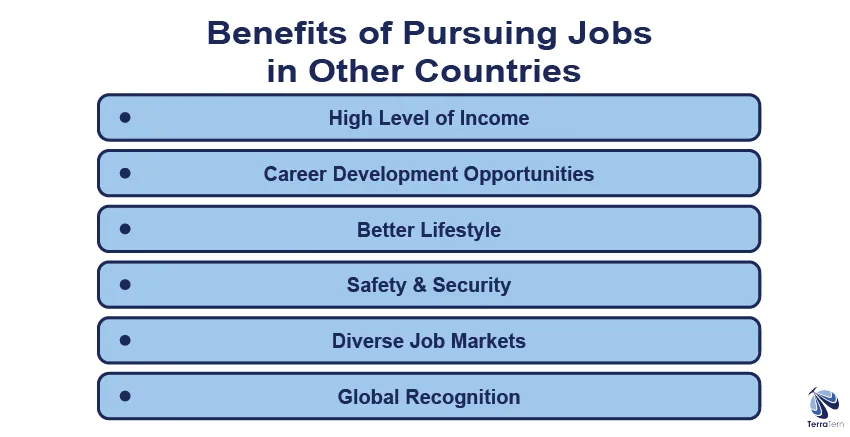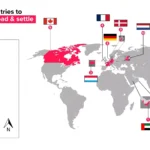Introduction
Understanding the strongest and weakest job markets worldwide has never been more critical in our interconnected global economy. This comprehensive 5000-word analysis provides an in-depth examination of the strongest and weakest job markets worldwide, offering valuable insights for job seekers, employers, investors, and policymakers. By analyzing the strongest and weakest job markets worldwide, we can identify emerging opportunities, anticipate economic challenges, and make informed decisions about career moves, business expansions, and investment strategies.
Our research into the strongest and weakest job markets worldwide considers multiple dimensions including employment rates, wage growth, sector performance, and future outlooks. Whether you’re a recent graduate exploring international opportunities, a corporate leader planning global expansion, or an economist studying labor trends, this guide to the strongest and weakest job markets worldwide will serve as an essential resource.
Why Analyzing the Strongest and Weakest Job Markets Worldwide Matters
Examining the strongest and weakest job markets worldwide provides numerous strategic advantages:
- Career Planning: Helps professionals identify locations with abundant opportunities in their field
- Business Strategy: Guides corporations in making informed expansion and hiring decisions
- Economic Forecasting: Reveals global employment trends and potential market shifts
- Policy Development: Assists governments in creating effective labor market reforms
- Investment Decisions: Informs capital allocation based on workforce stability and growth
- Educational Guidance: Helps students choose fields with strong international demand
- Migration Patterns: Explains global workforce movements and talent flows
Our analysis of the strongest and weakest job markets worldwide goes beyond simple unemployment statistics to provide a nuanced understanding of labor market health across different regions and industries.
Methodology: How We Evaluate the Strongest and Weakest Job Markets Worldwide
To accurately assess the strongest and weakest job markets worldwide, we’ve developed a comprehensive evaluation framework examining seven key indicators:
- Unemployment Rates: Both overall and youth unemployment statistics
- Job Creation Trends: 12-month employment growth patterns
- Wage Growth: Real wage increases adjusted for inflation
- Labor Force Participation: Employment-to-population ratios
- Sectoral Performance: Growth versus decline across industries
- Economic Stability: GDP growth projections and fiscal health
- Business Environment: Ease of doing business and regulatory climate
We’ve supplemented this quantitative analysis with qualitative factors including:
- Government labor policies
- Demographic trends
- Technological adoption rates
- Education system quality
- Infrastructure development
This multi-dimensional approach ensures our ranking of the strongest and weakest job markets worldwide provides a truly comprehensive view of global employment conditions.
The Strongest Job Markets Worldwide
1. Singapore: Asia’s Employment Powerhouse
Singapore consistently ranks at the top of the strongest and weakest job markets worldwide due to its exceptional employment ecosystem:
- Unemployment Rate: 2.0% (Q1 2025) – among the lowest globally
- Key Growth Sectors:
- Financial services (expanding at 5.8% annually)
- Technology (particularly fintech and AI)
- Biomedical sciences (with major research investments)
- Compensation Trends:
- Average monthly salary: SGD 5,197 (USD 3,850)
- Banking sector bonuses averaging 4-6 months’ salary
- Government Initiatives:
- SkillsFuture program (SGD 4 billion workforce development fund)
- Tech.Pass visa attracting global tech talent
- 30% corporate tax incentives for R&D investments
2. Germany: Europe’s Economic Engine
Germany maintains its strong position among the strongest and weakest job markets worldwide through:
- Employment Fundamentals:
- Unemployment rate: 3.1% (March 2025)
- Record 1.98 million job vacancies across sectors
- Labor force participation at 77.6% (15-64 age group)
- Industry-Specific Insights:
- Engineering: 189,000 current vacancies
- Healthcare: 150,000 nurse shortage
- IT: 137,000 open tech positions
- Policy Landscape:
- New immigration laws simplifying skilled worker visas
- Minimum wage increased to €12.41/hour (USD 13.50)
- Kurzarbeit (short-time work) program stabilizing employment
3. Canada: North America’s Opportunity Hub
In our analysis of the strongest and weakest job markets worldwide, Canada stands out for:
- Labor Market Dynamics:
- Unemployment rate: 5.2% (April 2024)
- 308,000 new jobs created in past 12 months
- Immigration driving 80% of labor force growth
- Regional Variations:
- Alberta: 3.1% job growth (energy sector rebound)
- Ontario: Tech sector expanding by 8.3% annually
- British Columbia: Construction boom with 12,000 openings
- Future-Focused Initiatives:
- Global Talent Stream (2-week visa processing)
- $2.5 billion Clean Tech Jobs Fund
- Digital Nomad Strategy attracting remote workers
4. United Arab Emirates: Middle East’s Employment Oasis
The UAE features prominently among the strongest and weakest job markets worldwide with:
- Economic Fundamentals:
- Unemployment at 3.3% (2023)
- Non-oil sector growing at 6.2% annually
- 72% of companies planning to increase headcount
- Talent Attraction Strategies:
- Golden Visa program (10-year residency)
- 0% income tax policy
- Special economic zones with 100% foreign ownership
- Sectoral Growth:
- Construction: $23 billion in mega-projects
- Finance: Dubai International Financial Centre expansion
- Tourism: 40,000 new hospitality jobs anticipated


